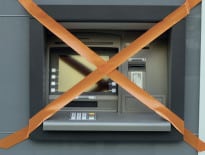Auto loan balances have reached a record high, fueled by steady sales growth in the post-recession economy. And as auto prices rise, auto loan terms are getting longer. Are consumers becoming overleveraged in their car purchases? Not necessarily, say auto lenders and industry experts.
Subprime auto lending, which ramped up significantly after the recession, hit the brakes last year as big banks, fearing a runup in delinquencies, pulled back and went in search of consumers with higher credit scores for both new and used vehicles, according to the most recent quarterly auto finance report from Experian, which follows trends and fiscal health in the automotive finance market.
While vehicle prices continue to rise, a surge in off-lease volume is depressing vehicle value, said Melinda Zabritski, Experian’s senior director of automotive finance.
Experian reported subprime auto lending reached a 10-year record low for first-quarter numbers as of first quarter 2017. The total share of subprime and deep subprime loans dropped from 26.48 percent in Q1 2016 to 24.1 percent in Q1 2017. Meanwhile, super-prime loans rose from 27.4 percent to 29.12 percent over the same quarterly time periods.
Extended loan terms, short-term leases and a shift by super-prime customers to used cars are playing a big role in auto leases and sales. Loan terms of 73 to 84 months are becoming more standard as lenders strive to keep monthly payments budget-friendly.
A New Kind Of Loan Product
“When lenders started offering 60-month terms on new auto loans [in the late ’70s and early ’80s], we all thought, ‘This can’t last,’ for the simple reason most cars built back then wouldn’t last that long,” said Alan Jenne, senior vice president and director of consumer lending at Worcester-based Commerce Bank. Now, once-unimaginable 72- to 84-month loan terms are becoming more the standard, he said.
Cars may be better quality and last longer, Jenne said, but that doesn’t mean car values depreciate any more slowly. What then is the risk of going upside-down on a loan – owing more than the vehicle is worth?
Super-prime and prime borrowers’ eligibility for longer-term loans is based more on their creditworthiness than on the vehicle’s value, Jenne said, and they’ll generally pay regardless of the loan terms. Additionally, the high-end vehicles they tend to buy depreciate less over time than a standard model, especially if that standard model has flooded the market, he said.
The risk of overleveraging is primarily in the near or subprime borrower space. “Ironically, these are the borrowers that need the longer term more than most others,” Jenne said. Lower incomes, disrupted incomes and unexpected expenses increase their risk.
Experian’s research showed that subprime auto lending, which had fairly stable delinquency rates post-recession, is now seeing an uptick in delinquencies nationwide. That has caused banks to pull back from the category. Commerce Bank is not in the subprime space – instead, it does specialty auto loans on antique, classic, vintage and other categories that actually appreciate over time.
“Subprime lending is very specialized product that needs well qualified lenders that understand it, and most importantly you need an extra strong back-end in the collection area,” he added. “From my past experiences, if you have a very strong collection team, [you] can save yourself a lot of sleepless nights and money.”
 Credit Unions Increase Market Share
Credit Unions Increase Market Share
Credit unions are making increased inroads into auto lending, according to Experian’s Karl Kruppa, senior automotive solutions consultant. At the CU Direct Drive 17 conference this past spring, he noted that a credit union topped the national lenders’ list for luxury car loans. Credit unions occupied just above 20 percent of the entire auto lending market, he told the audience. They’re taking increased positions in the subprime market as banks pull back from that category, and they lead in lending for older cars.
Subprime delinquencies stayed stable after the recession but have recently risen. Experian’s first quarter 2017 data show that the so-called “deep subprime” category stood at 3.76 percent, up from 3.45 percent for first-quarter 2016. But credit unions’ portfolios have not borne the brunt of an increase in delinquencies, Kruppa said.
Experian’s Zabritski noted that credit unions have the edge over banks and other lenders in three ways: regulatory differences, lower cost of funds and low interest rates. They also take a dominant chunk of the used-car market, with 70 percent used/30 percent new, compared to banks, which split 60 percent used/40 percent new.
Tom Gray is senior vice president of lending at Fitchburg-based Workers Credit Union, which offers auto loans for up to 84 months for a new car. But only a small percentage of its loans run that long. Twelve percent of its loans are between 48 and 60 months; 46 percent from 60 to 72 months; and 30 percent are 72-83 months.
Workers considers the age and the condition of the car in determining the length of the loan. The credit union tries to steer its members into the best and most economical vehicle for the length of the loan in order to keep them from going upside-down on their loans.
For borrowers having second thoughts about the rate on their existing loans, Digital Federal Credit Union (DCU) offers a highly-advertised auto loan refinancing product it calls a Second Chance auto loan.
“Our members primarily refinance with a Second Chance auto loan with us because the rate that they received at the time of their original purchase was higher than [the] rates we offer,” said Craig Roy, DCU’s senior vice president of retail lending.
“We’re in a relatively natural cycle [in lending],” Experian’s Zabritski said. Banks’ subprime loan origination is a “small and shrinking” slice of their portfolios. “We expect cycles where lenders pull back from subprime,” she said.








